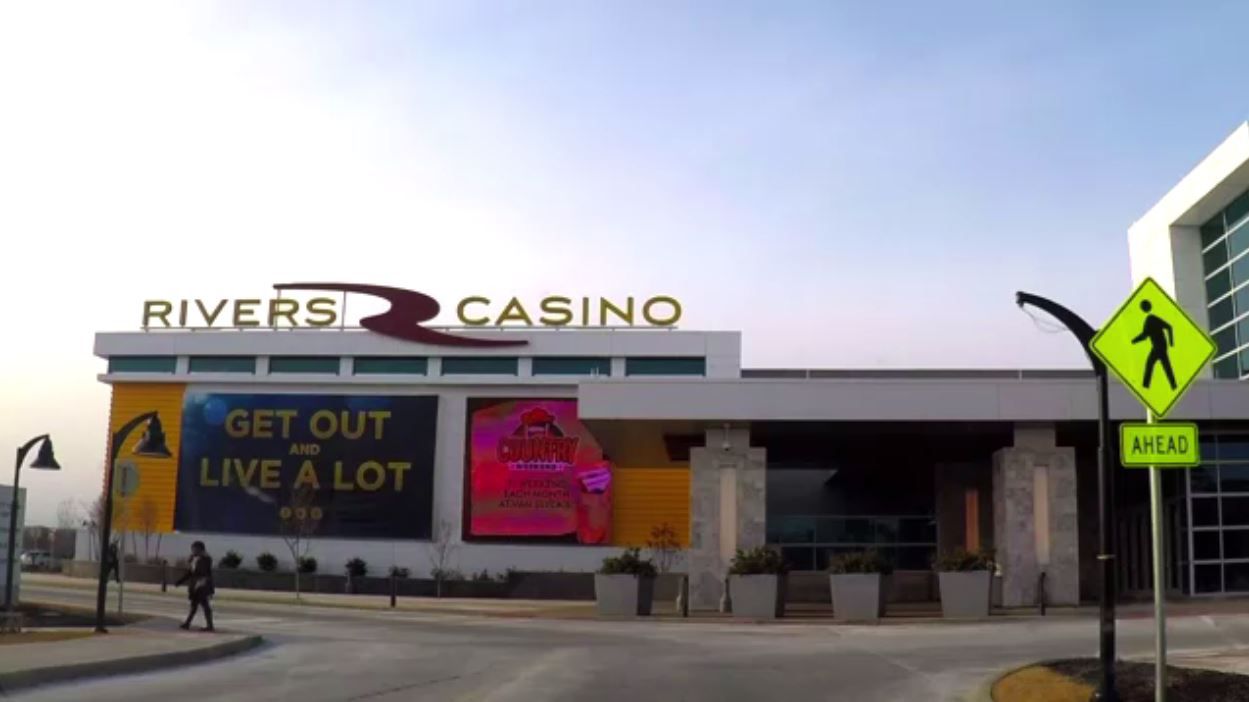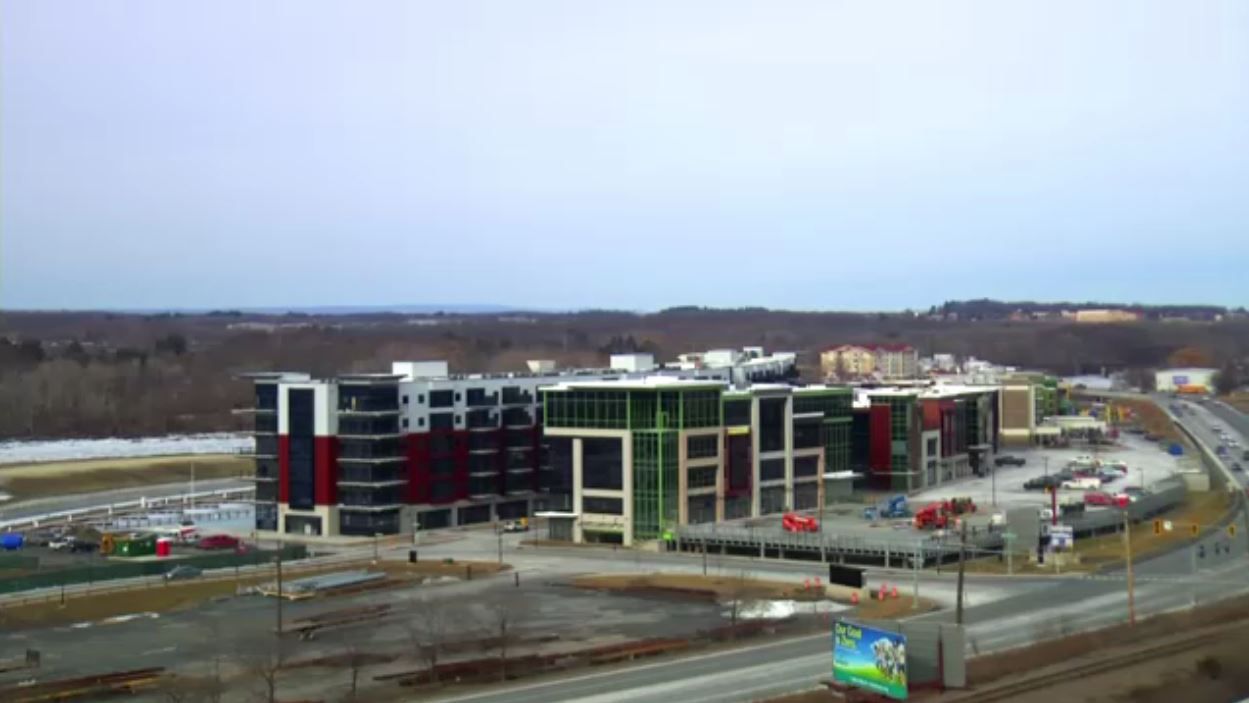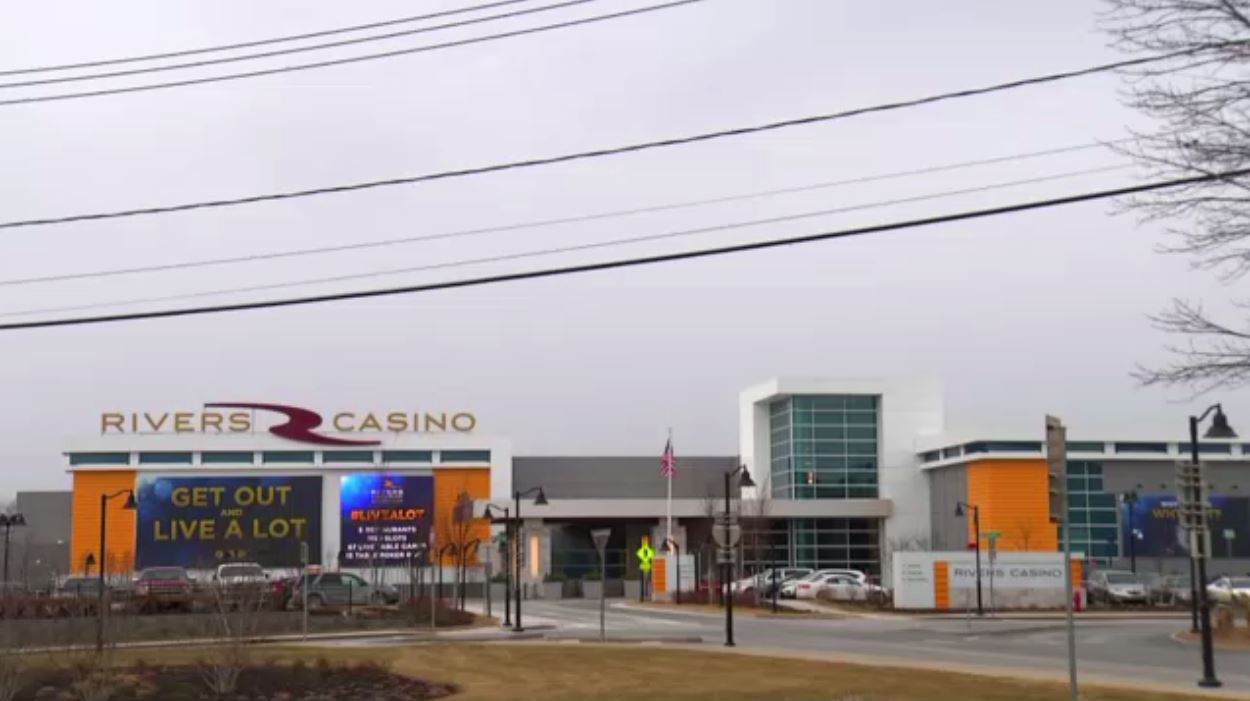PART ONE: DOLLARS AND CENTS
Nearly a year after its opening, the Rivers Casino and Resort has changed the Schenectady area. Spectrum News’ Barry Wygel takes a look at what has changed since the casino opened its doors.
To judge for yourself the level of Rivers Casino and Resort’s success, you have to understand where the money goes. Rivers pays about $6 million in sales and property tax, which goes to the school district, county and state. But casinos in New York must also pay gaming tax.
Let’s take an average month, like September 2017. Gamblers made bets of about $117 million, and won about $90 million back in winnings. That leaves $12 million for Rivers Casino in revenue.
Eight million dollars of that goes to the casino operator for salary and other costs, and $4 million is given back to municipalities. Eighty percent is given to the state to be used for education statewide, while $200,000 goes to each the city and county of Schenectady. The rest is divvied up between neighboring counties.
But all of those totals are far less than what was first estimated back in 2014.
“What we were told in 2014 is certainly not what we are getting," said Schenectady city council member Vincent Riggi. “We did over budget in 2017 for those revenues. We over-budgeted by $600-$750,000 more than we are going to take in.”
In 2014, Rivers Casino estimated it would pay $74 million in gaming taxes. From its opening in February through the end of 2017, it paid much less than projected, $42 million. Rivers officials declined to give their take on these numbers and would not give an interview.
Schenectady originally hoped to drop property taxes by 18 percent, but last year was only able to drop them by 1 percent. But local officials remain optimistic.
“We’ve done three years of tax cuts in a row, so a lot of that was independent of the casino," said Mayor Gary McCarthy.
“One of the reasons the project was so appealing was how do we lower the tax burden to local residents and local businesses," said Mark Eagan, CEO of the Capital Region Chamber. “For those reasons, we want them to meet all those projections. You know, they haven’t been open a year yet, and sometimes, when a business first opens, there [are] a few bumps in the road.”
Beyond the impact of tax revenue, the casino dropped the Schenectady County unemployment rate from 5.9 to 5.3 percent.
“[Eleven hundred] jobs is extraordinary -- many of them coming out of the city of Schenectady giving them opportunity," said Gary Hughes, majority leader of the Schenectady County Legislature.
“As people get a track record with the organization and stability, we are looking at home ownership opportunities. It adds the economic vitality of the community as a whole. It’s significant," said McCarthy.
No matter how much money the casino made in 2017, its impact is undeniable. It took a city in the middle of a renaissance and jolted it forward.
PART TWO: INFRASTRUCTURE
A year after Rivers Casino opened its doors, Schenectady has seen a number of development projects, and there's still more to come.
It’s not just the casino bringing construction cranes to the Electric City. Schenectady is almost unrecognizable from 20 years ago.
“It showed that we could compete statewide with national players and before that Schenectady was viewed as a second class community. People tended to make fun of it. We are slowly chipping away at that," said McCarthy.
What started as an effective gutting of State Street expanded onto lower State, and with the advent of Mohawk Harbor and the casino, construction is booming along Erie Boulevard.
“Really, it spread throughout downtown,” McCarthy said. “You’ve got lower Union Street. Development on lower State down to SCCC. Immediately adjacent to the casino, you have Mohawk Harbor, a mixed-use economic development project in the works before the casino.”
“There was a big vision for the project and what could happen for bringing in apartments and retail and other housing and a hotel, and there was an opportunity site within that," said Eagan.
The Galessi Group’s Mohawk Harbor Project is, without a doubt, the largest undertaking in the city. The Harbor project includes apartments, condos, office space, retail and restaurants -- all overlooking the Mohawk River. The public boat docks give people another way to get the casino and will host kayak rentals in the summer.
The space even has an amphitheater that can be viewed from most of the restaurant space, including the region’s newest Druthers location.
“We want people, when they ask the question ‘What are we going to do?’, we want them to answer, ‘Discover Schenectady,’ ” Hughes said. “When they do, they will find we have the arts, we have a casino, we have some amazing restaurants, and we have beautiful scenery and all different kind of things to do here.”
With big private projects come a big need for new infrastructure, and as anyone who has driven Erie Boulevard in the past five years knows, Schenectady was in need of an influx of money. With the casino coming, the state stepped up and prioritized projects in the city.
“Governor Cuomo and the DOT were able to, with the city, invest $57 million in the last five years, including the Erie Boulevard renovation," said Sam Zhou, region administrator for the NYS Department of Transportation.
From its terminus at 890 to the site of the casino, Erie Boulevard has been gutted and reconfigured, adding new sidewalks, street lamps and sewer and water, and took a dangerous interchange known for its accidents and brought it into the future.
“Transportation investment really is an integral part of the community," Zhou said.
Whether by plane, train or automobile, it is now easier to get to Schenectady. A new train station is set to open by the end of the year, bringing regional tourists to the area, and the state and federal government have teamed up with Richmor Aviation to revamp the Schenectady County Airport.
The legislature has been redeveloping the airport for a number of years, not really related to the casino,” Hughes said. “We’ve brought in one of the premier ambulance services. The Richmor expansion means a lot of private traffic coming into the Capital Region will come into that airport.”
"We’re not doing any one project in a vacuum; they all play off one another and add value to one another," said McCarthy.
With Erie Boulevard considered done, Druthers set to open this spring, apartments being leased, more retail being announced at the Harbor, and a new park and artisan district getting built on Lower State, worry over the casino not hitting its expected revenue projections has not hampered construction. If there is a downside, the mayor can’t find it.
“The adverse effects are all positives. More traffic, more activity in the community. I’m very pleased," McCarthy said.
“We’ll never say, ‘Boy, we’re done.’ But when you have a track record of success and positive momentum, it fuels continued investment," Eagan said.
PART THREE: LOOKING AT THE FUTURE
One year into the opening of the Rivers Casino, the impact on the average Schenectady resident is largely undetermined.
Casinos are still opening at a rapid rate across the region. The Oneida Nation is set to open its third casino outside of Syracuse on March 1. That’s in addition to the Yellow Brick Road Casino in Chittenango and their flagship Turning Stone. Resorts World Casino, the largest of New York’s proposed casinos, is opening February 8. Massachusetts has jumped on the bandwagon as well. A full casino is scheduled to open by the end of the year in Springfield Casino.
"As new casinos open up, it is clear they grow the market in terms of revenue, but it’s clearly taking revenue from existing casinos," said Keith Foley, analyst at Moody's Investment. “So while the market is growing and the pie is getting bigger, the slices are getting much, much smaller.”
At a time when Schenectady’s Rivers Casino is failing to meet revenue projections, it is ever more in a crowded market. City officials hope the addition of other amenities like the Mohawk Harbor will help buffet numbers.
“I’m not a betting person, so I’m not going to gamble on it,” said Riggi. “Rush Street Gaming has a strong track record with successful operations in other parts of the country, and they have a great team running it.”
But one year into the opening of the Rivers Casino, the impact on the average Schenectady resident is largely undetermined.
“The problem with the city is all the development, all the good things, are only happening in one small area of Schenectady. The neighborhoods are still in dire need of help. I’ll liken it to now we have a healthy heart, but we have a lot of clogged veins going to that heart," said Riggi.
“Everybody sees benefits in different ways, and some people have to see things differently and position themselves to take advantage of the opportunities," said McCarthy.
Success is an abstract concept. The casino is making money. Some of that money is going to property tax relief. Hundreds of millions of dollars are being spent to improve the city.
“I think it is all part of the positive momentum. It shows confidence in the marketplace,” Eagan said. “If you look at lower State Street, you have two significant housing projects going on. People wouldn’t be spending that kind of money if they didn’t believe people wanted to live and work in downtown Schenectady.”
"Certainly, Erie Boulevard was accelerated by the casino,” Hughes said. “The train station was accelerated by the casino project. It’s become something of great interest to the governor; he actually had them redesign it. It certainly encouraged the developers of Mohawk Harbor to go all in and do it at once. There’s downtown development that was accelerated by the casino.”
It’s impossible to tell the long-term prognosis of the casino. Any number of local, national and world factors could impact the economy and the amount of people heading to the slots and tables, but no matter what the outcome, it will have forever left its mark on Schenectady.









